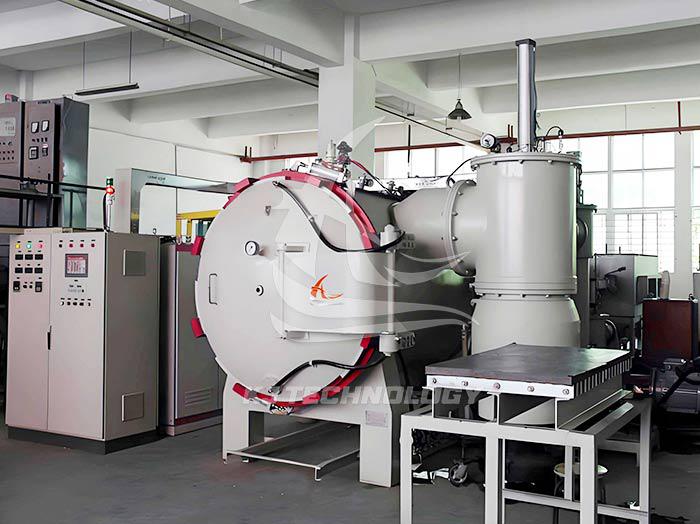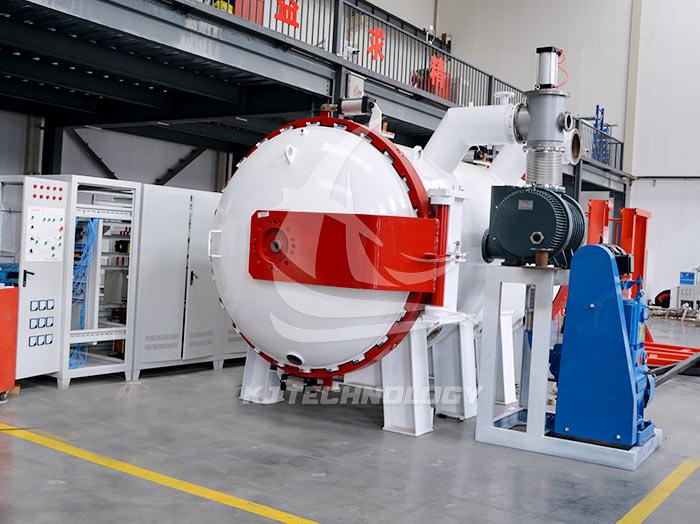Precautions for using pressure sintering furnace
 07-09-2025 Author: KJ technology
07-09-2025 Author: KJ technology
As a key equipment in high-temperature and high-pressure environments, the use of pressure sintering furnaces involves various risks such as safety, process control, and equipment maintenance. To ensure stable operation and extend the service life of the equipment, the following precautions must be strictly followed:
1. Safety operation standards
Personnel protection and training
Operators are required to wear protective clothing, heat-resistant gloves, goggles, and gas masks to avoid high-temperature burns, splash injuries, and inhalation of toxic gases.
Regularly receive safety training, familiarize oneself with equipment operation procedures, emergency plans, and first aid measures.
Equipment safety inspection
Daily inspection: Confirm that safety accessories such as pressure gauges, thermometers, safety valves, emergency relief devices, etc. are sensitive and reliable, and that the electrical system has no leakage or short circuits.
Regular calibration: Calibrate key components such as pressure sensors and thermocouples every quarter to ensure data accuracy.
Pressure and temperature control
Pressure limit: Strictly follow the rated pressure range of the equipment (such as 1-10 MPa), and prohibit overpressure operation. The rate of pressure increase/decrease should be controlled at ≤ 0.5MPa/min to avoid equipment damage caused by pressure shock.
Temperature control: The set temperature should not exceed the maximum operating temperature of the equipment (such as 2000 ℃), and the heating rate should be adjusted according to the material characteristics (such as ceramic materials ≤ 5 ℃/min) to prevent thermal stress cracking.
Emergency situation handling
Equipped with an emergency stop button, automatic pressure relief device, and fire alarm system to ensure that the power can be quickly cut off and pressure can be released in case of overpressure, overheating, or equipment failure.
Regularly practice emergency plans, including processes such as fire suppression, personnel evacuation, and equipment isolation.
2. Process parameter control
Temperature uniformity
Use thermocouples for multi-point temperature measurement to ensure that the temperature difference inside the furnace is ≤ ± 5 ℃ (precision sintering requires ≤ ± 1 ℃). By adjusting the power of heating elements or optimizing the furnace structure design, temperature gradients can be eliminated.
pressure stability
During the holding phase, pressure fluctuations should be controlled within ≤± 0.02MPa. When using hydraulic systems or gas pressurization, it is necessary to regularly check the stability of seals and pressure sources.
atmosphere control
Choose vacuum (≤ 2Pa), inert gas (such as nitrogen, argon), or reducing atmosphere (such as hydrogen) according to material requirements. The gas flow rate needs to be stable to avoid oxidation or pollution.
For example, during the sintering of semiconductor ceramics, the oxygen partial pressure control accuracy needs to reach ± 1ppm to prevent component segregation.
Heating and insulation procedures
Develop a staged heating curve, including dewaxing, preheating, sintering, and cooling stages. For example, hard alloy sintering requires dewaxing at 400-600 ℃ and insulation at 1400-1600 ℃ for 2-4 hours.
The cooling rate should be adjusted according to the material characteristics to avoid cracking caused by rapid cooling (such as ceramic materials with a cooling rate of ≤ 10 ℃/min).
3. Equipment maintenance and upkeep
Routine maintenance
Cleaning the furnace body: Clean the residue inside the furnace after each use to prevent corrosion or contamination.
Check seals: Regularly replace sealing rings on furnace doors, pipelines, and other parts to ensure vacuum or atmosphere stability.
Lubricate moving parts: Regularly lubricate guide rails, hydraulic rods, and other parts to reduce wear.
Regular maintenance
Half yearly maintenance: Check the aging condition of heating elements (such as silicon carbon rods and silicon molybdenum rods) and replace damaged parts; Clean the cooling water circuit to prevent scaling and blockage.
Annual overhaul: dismantle the furnace body, inspect the corrosion of the refractory materials on the inner wall, and rebuild if necessary; Verify the strength of pressure vessels to ensure safe operation.
Spare parts Management
Reserve key spare parts (such as heating elements, pressure sensors, seals) to ensure quick replacement in case of malfunction. Establish a spare parts inventory ledger, conduct regular inventory checks and replenish.
4. Material and tooling requirements
Material Compatibility
Confirm that there is no chemical reaction between the sintered material and the furnace body material (such as graphite, mullite, molybdenum). For example, strong acidic materials should avoid using metal furnace bodies.
Control the loading amount of materials to avoid exceeding 80% of the furnace chamber volume and prevent local overheating caused by heat concentration.
Tooling Design
Use high-strength, high-temperature resistant fixtures (such as graphite molds, ceramic trays) to ensure that they do not deform under high pressure.
The contact surface between tooling and materials should be smooth to avoid scratching or contaminating the material surface.
Demoulding and cleaning
After sintering is completed, wait for the furnace temperature to drop below 100 ℃ before starting the furnace to take parts, in order to prevent thermal stress from causing cracking of the workpiece.
Use specialized tools to clean the surface residue of the tooling, avoiding scratches or damage.
5. Environmental and Compliance Requirements
emission control
Equipped with exhaust gas treatment devices (such as dust collectors and desulfurization towers) to ensure that exhaust emissions meet environmental standards (such as particulate matter ≤ 10mg/m ³, SO ₂ ≤ 50mg/m ³).
Regularly detect the composition of exhaust gas and adjust process parameters to reduce the generation of pollutants.
Noise control
Take sound insulation measures (such as installing mufflers and soundproof covers) for noise sources such as hydraulic pumps and fans to ensure that the workplace noise is ≤ 85dB (A).
Compliance Management
Establish equipment archives, record operating parameters, maintenance records, and inspection reports to ensure traceability.








